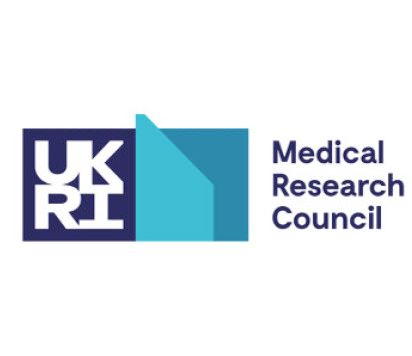 Aisling McGarry is a Research Technician in the UK DRI at Imperial. Aisling completed her Master's at Imperial in Experimental Neuroscience in 2019 before joining the team as a technician. Aisling is currently involved in the Multi 'Omics Atlas Project where she contributes by processing tissue using histological and transcriptomic techniques. This week she interviewed our Edmond and Lily Safra Research Fellow Sarah Marzi on her current work, her future research and life in lockdown.
Aisling McGarry is a Research Technician in the UK DRI at Imperial. Aisling completed her Master's at Imperial in Experimental Neuroscience in 2019 before joining the team as a technician. Aisling is currently involved in the Multi 'Omics Atlas Project where she contributes by processing tissue using histological and transcriptomic techniques. This week she interviewed our Edmond and Lily Safra Research Fellow Sarah Marzi on her current work, her future research and life in lockdown.
A Conversation with Dr Sarah Marzi

May 2020
Dr Marzi is an Edmond and Lily Safra Research Fellow and UK DRI Career Development Fellow at the UK Dementia Research Institute at Imperial College London. Sarah uses genome-wide genetic and epigenetic techniques as well as innovative bioinformatic and statistical approaches to investigate epigenetic dysregulation in disease.
Aisling: Just to introduce yourself, could you describe your research career so far and specifically how you developed an interest in epigenomics?
Sarah: I initially studied mathematics and psychology at the University of Freiburg in Germany. I really love both areas of study. I have always been interested in how the brain works and how it malfunctions during disease, whilst I have appreciated the use of quantitative methodologies and mathematical thinking. As I was finishing my maths degree, I grew more interested in practical applications of mathematics rather than pure, theoretical mathematics. From this, I decided to specialise in medical statistics and epidemiology. I used my PhD studies – at King’s College London – as an opportunity to delve into the genetics, and in particular, epigenetics underlying brain and behavioural phenotypes using quantitative and statistical approaches. My work examined epigenetic regulation of neurodegenerative disease, but also looked at the long-lasting, epigenetic impacts of extreme trauma in early childhood. To do this, I got to use a really broad range of laboratory and statistical techniques – all of which was very exciting.
Aisling: Could you describe simply how epigenetic mechanisms work?
Sarah: I think the field still has not come to a consensus as to what exactly epigenetics is, but I will define it as I understand it. Broadly, epigenetics defines the biochemical mechanisms that regulate gene expression. Epigenetic mediators tend to be retained during cell division, but can be potentially altered by environmental influences. In terms of what types of mechanisms exist, there are three main classes. The first would be DNA modifications. These involve chemical molecules that bind to the DNA itself. The most prevalent DNA modification is methylation – meaning the addition of a methyl group to a cytosine – in the context of a cytosine/guanine dinucleotide. Then, you have histone modifications. Histones are proteins around which DNA is wound up into structures called nucleosomes and packaged in the nucleus. These nucleosomes have amino acid tails coming out of them which are chemically modifiable, e.g. by methylation or acetylation. These modifications regulate gene expression by altering how much the DNA is attracted to or repelled away from the histones. If they attract the DNA, it'll be very tightly packaged, meaning reduced binding of transcriptional machinery which reduces gene expression. Whereas, if it repels DNA, it will be very loosely wound around the histones, meaning more binding of transcriptional machinery and greater gene expression. The last class would be non-coding RNA. These are RNAs that do not encode for proteins, but can often have regulatory functions, e.g. small interfering RNA. For example, they can be involved in splicing events or they can – this is more the case for long non-coding RNA – alter 3D chromatin conformation by bringing two pieces of DNA together.
Aisling: Your research so far has investigated epigenetic signatures defining conditions from obesity to Alzheimer’s disease. Would you say that studying epigenetic mechanisms provides unique insight into disease mechanisms?
Sarah: Absolutely. I think the beauty of epigenetics is that it sits between genetics and environment. So epigenetics can be influenced by genetic variants, and it can also help us interpret genetic variants and as such, genetic risk factors for diseases. Take Alzheimer's disease, which is known to be highly heritable. We are identifying increasing numbers of genetic risk variants. But very often, they are not protein sequence altering variants. They tend to lie outside of genes. In particular, they seem to be enriched in regulatory regions. Enhancers, for example, come up quite often. So presumably their effect is on the regulation of another gene and you require the epigenetic layer in order to be able to interpret what kind of regulatory region they lie in and which gene they regulate. You may also require information about 3D chromatin structure. It can become very difficult because such events tend to be cell-type specific. This means you need to pinpoint the cell-type where this effect occurs in order to interpret what is actually being regulated. So, generally, it can help us understand diseases by interpreting genetic risk factors. But then again, if we can figure out the effects of environmental risk factors it could be just as useful. If you then take Parkinson's disease, which appears to be almost equally influenced by genetics and environment – epigenetics could really elucidate the drivers of neurodegeneration by locating where gene regulation is first altered in response to genetic and environmental risk factors and determine what the resultant cellular outcomes are.
Aisling: That leads nicely onto my next question. Since joining the UK Dementia Research Institute, your current research focus lies in the epigenetic regulation of Parkinson’s disease. What is known about this in the field so far? Could you outline your plans to investigate this further in your research?
Sarah: As I just mentioned before, Parkinson’s is slightly different from other neurodegenerative diseases in that it's only moderately heritable. It does have genetic risk factors and there are some very good studies that had already identified quite a few genetic risk variants. We also know some of the environmental risk factors, which is important. They tend to be things like environmental toxicants and smoking, which is interestingly shown to be a protective factor for Parkinson's disease. However, the pathogenic mechanisms are not yet understood. So, my focus, very broadly speaking, is understanding the epigenetic consequences of both genetic and the environmental risk factors. I'll do this using different experimental models and systems. I tend to work with post-mortem human brain tissue. I'll work with the Parkinson's Disease Brain Bank at Imperial College London and look for epigenetic differences in the relevant cell types, but also generally across a tissue sample to interpret the known genetic risk variance. A recent intriguing finding from my colleague, Nathan Skene, has pinpointed some of the potentially causal cell types in Parkinson’s disease. This work highlighted mainly dopaminergic neurons, which is the primary degenerating cell-type, but also oligodendrocytes, which is a bit more of a surprise. Following up in those cell types, we can ask some important questions. What do these epigenetic risks variants do? Which enhancers do they fall into? Which genes do they regulate? That's something that I'm really interested in. I'm also thinking of using in vivo rodent models to study environmental impacts more cleanly; by experimentally exposing mice or rats to certain toxicants and observing whether they develop Parkinson-like phenotypes and how that corresponds to altered gene regulation in the brain. Once you've formed predictions about what environmental and genetic risk variance do at the cell-type specific levels; you could use in vitro cellular systems to test this. In such a system, we could manipulate a potentially causal genotype and check what the downstream effect on the cell is.
Aisling: How do you envisage your research efforts will contribute towards future translational outcomes for Parkinson’s disease?
Sarah: It's a tricky one. I see my work quite upstream of the translational cascade, so to speak. I would say my work comes under basic research; serving to elucidate general transcriptional and regulatory mechanisms and how they are altered in disease. But it is my philosophy, at least for my research, that having a systematic understanding of how these mechanisms work, locating mechanisms to specific cell-types and elucidating downstream consequences will give us the best shot at identifying targeted treatments. I am quite optimistic and hopeful that really understanding the gene regulatory machinery will, in the long-term, give us much better predictions about the systems and modulators one could target to improve or prevent disease.
Aisling: Are there any novel technological advances that are particularly exciting in the field of epigenetics or Parkinson’s disease?
Sarah: I guess I'm probably a bit biased towards appreciating genomics efforts, because that's where most of my expertise lies! I'm really excited by single-cell technologies: the revolution that has enabled researchers to really pinpoint transcriptional and epigenetic activity in individual cell-types. We have already seen lots of advances coming out in the field of single-cell RNA sequencing. We now have single-cell ATAC sequencing – which can give us an epigenetic layer of information at the single cell level. I'm sure in a few years we'll be able to analyse other epigenetic modifications at single cell scale, particularly histone modifications. That will be exciting. I'm also very excited about chromatin interactions – technologies that let you profile which parts of the genome interact with each other in 3D space. Parts of the genome that are very far apart in terms of the linear scale of the genome may in fact align closely together in 3D space due to the way they are packaged in the cell nucleus. Chromatin conformation capture is a technique to enable investigation of this. Gathering such information allows for interpretation that has not yet been possible, for example, knowing what genes are regulated by an enhancer. How else would you be able to show this? At the moment there is no other way of understanding it. So that's really exciting.
Aisling: Does genetic regulation rely a lot on these interactions?
Sarah: Certainly, for enhancer function. Sometimes enhancers lie relatively close to the gene they regulate. This means it may be easier to guess whether the enhancer could influence that particular gene, just based on proximity. But that's not always necessarily the case. There are also distal enhancers which can be up to millions of base pairs away. Even an enhancer that is quite close to one gene might end up regulating another gene much further way. So only by knowing which pieces of DNA interact with each other can we gain that insight.
Aisling: During this pandemic and nation-wide lockdown, many of us find ourselves working from home. How have you been finding lockdown? Has it presented new challenges in the way that you work?
Sarah: I think I'm quite lucky overall in that first of all I still have a job. As much of my work is computational in nature, I can do this from home. I am also spending a lot of my time writing grant applications or papers now. My team has adapted really well to the virtual world – we are using Slack and Zoom a lot. We are seeing each other virtually very regularly, so that's quite nice. But, of course, it is a challenging time. It's challenging to plan ahead, especially for experimental projects that I would like to get going. It's difficult to know when that will be possible, that makes it, in turn, difficult to recruit appropriate staff. I find it personally quite challenging to be isolated because I love to interact with people. I'm quite extroverted so I do find the experience a little bit isolating. But on the whole, I think I am very lucky, and it is going as well as it can be.
Aisling: We know advanced age is the most significant risk factor for COVID-19 disease severity and mortality. People affected by neurodegenerative diseases tend to be older and may be more vulnerable to the effects of COVID-19. Do you envisage that the COVID-19 pandemic will influence the course of neurodegenerative disease research?
Sarah: Yes, that's another tricky one. I think it's good that special funds are being allocated to focus on COVID-19 research. In our field, as you highlighted, populations affected by neurodegenerative diseases are also at a greater increased risk of developing severe COVID-19. It's important to look at how to deal with such vulnerability – how to improve their lives, how to help them by preventing social isolation whilst keeping them safe. These measures seem to be already happening, which is great. In terms of research, I'm a bit worried that in the long-term, funding might move away from more core neurodegenerative research because attention is diverted to other research efforts. It's difficult to say, but we know that neurodegenerative diseases will remain a huge societal, medical, and personal problem in the world. People are not going to stop getting older. People will continue to acquire neurodegenerative diseases that are difficult for affected people, for families, and for society. So, I do hope that we can keep on pushing to understand these diseases and hopefully one day be able to treat or even prevent them.

